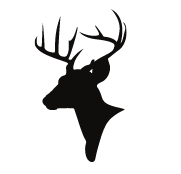Colorado Hunting Seasons 2024-2025: Rules and Regulations
Colorado, with its sprawling plains, vast forests, and majestic Rocky Mountains, offers an unparalleled hunting environment. The Centennial State is renowned for its diverse wildlife, making it a favorite for hunters across the nation.
Ensuring a successful and lawful hunting adventure in Colorado demands a thorough understanding of the state’s hunting seasons, as well as the regulations surrounding them.
Colorado is known for its bountiful big game opportunities, including elk, mule deer, and pronghorn, as well as small game hunts for species such as pheasant, grouse, and rabbit. Each game species and hunting method has its designated season, ensuring a regulated and balanced approach to hunting.
Colorado Elk Seasons
| Hunting Method | Dates |
|---|---|
| Archery | Sept. 2-30 |
| Muzzleloaders | Sept. 9-17 |
| Rifle | Oct. 14-18, Oct. 28-Nov. 1, Nov. 11-17, Nov. 22-26 |
Colorado Deer Seasons
| Hunting Method | Dates |
|---|---|
| Archery | Sept. 2-30 |
| Muzzleloaders | Sept. 9-17 |
| Rifle | Oct. 14-18, Oct. 28-Nov. 1, Nov. 11-17, Nov. 22-26 |
Colorado Plains Deer Seasons
| Hunting Method | Dates |
|---|---|
| Archery | Oct. 1-27, Nov. 8-30, Dec. 15-30 |
| Muzzleloaders | Oct. 14-22 |
| Rifle | Oct. 28-Nov. 7, Dec. 1-14 |
Colorado Pronghorn Seasons
| Hunting Method | Dates |
|---|---|
| Archery | Aug. 15-31, Sept. 1-20 |
| Muzzleloader | Sept. 21-29 |
| Rifle | Oct. 7-15 |
Colorado Moose Seasons
| Hunting Method | Dates |
|---|---|
| Archery | Sept. 9-30 |
| Muzzleloaders | Sept. 9-17 |
| Rifle | Oct. 1-14 |
Colorado Bear Seasons
| Hunting Method | Dates |
|---|---|
| Archery | Sept. 2-30 |
| Muzzleloaders | Sept. 9-17 |
| Rifle | Sept. 2-30, Oct. 14-18, Oct. 28-Nov. 5, Nov. 11-17, Nov. 22-26 |
| Private land | Sept. 2-Nov. 26 |
Colorado Turkey Seasons
| Season | Dates |
|---|---|
| Fall | Sept. 1-Oct. 27* |
| Late Season | Dec. 15-Jan. 15* |
**Season dates vary by zone.
Colorado Small Game Seasons
| Game Type | Season | Dates |
|---|---|---|
| Abert’s Squirrel | – | Nov. 15-Jan. 15 |
| Beaver | – | Oct. 1-Apr. 30 |
| Bobcat | – | Dec. 1-Feb. 29 |
| Common Snapping Turtle | – | Apr. 1-Oct. 31 |
| Rabbit | – | Oct. 1-Feb. 29 |
| Coyote | – | Open season |
| Fox and Pine Squirrel | – | Oct. 1-March 31 |
| Marmot | – | Aug. 10-Oct. 15 |
| Prairie Dogs | – | June 15-Feb. 29 |
| Prairie Rattlesnake | – | June 15-Aug. 15 |
| Wyoming Ground Squirrel | – | Open season |
For more comprehensive and detailed information, particularly about zones and specific regions, please visit the Colorado Parks & Wildlife website.
Colorado Hunting Seasons FAQ
Q1: Where can I secure a Colorado hunting license? A: Hunting licenses for Colorado can be procured online via the Colorado Parks and Wildlife website. Moreover, they can be purchased in-person at CPW offices, state park offices, and authorized sales agents scattered throughout the state.
Q2: How does tagging operate in Colorado? A: For certain big game species in Colorado, a tag system is in place. Once a hunter successfully harvests an animal, they must immediately notch the carcass tag and attach it to the animal. This process is crucial for game management and monitoring harvest data.
Q3: Is wearing fluorescent orange mandatory during hunting seasons in Colorado? A: Yes, during many rifle seasons in Colorado, hunters are required to wear a specific amount of fluorescent orange or pink on their outer layer. The specific requirements can differ depending on the game and season, so always refer to current regulations.
Q4: How are bag limits determined in Colorado? A: Colorado Parks and Wildlife sets bag limits based on thorough scientific research, wildlife population evaluations, and community input. These limits are crafted to ensure sustainable hunting and the conservation of the state’s diverse wildlife.
Q5: Does Colorado have specific rules concerning firearms and ammunition for hunting? A: Absolutely, Colorado enforces regulations regarding the types of firearms and ammunition allowed for various game species. These restrictions can change depending on the species and hunting season. Always consult the latest CPW regulations before your hunting excursion.
Q6: If I stumble upon a sick or injured animal while hunting, what action should I take? A: If you encounter an animal that seems unwell or injured, it’s crucial not to attempt to kill or approach it. Instead, you should immediately report the sighting to the nearest CPW office or game warden. This ensures both the safety of the animal and the person.
Conclusion
From the high-altitude adventures tracking elk to the tranquil experiences hunting waterfowl on the plains, Colorado provides an unmatched array of hunting prospects.
Knowledge of hunting seasons, license procedures, and ethical guidelines ensures not only a successful hunt but also aids in the conservation of Colorado’s precious wildlife and habitats.
By strictly adhering to these guidelines, hunters contribute significantly to the preservation of Colorado’s esteemed hunting heritage and the invaluable ecosystems that sustain life in this picturesque state.
